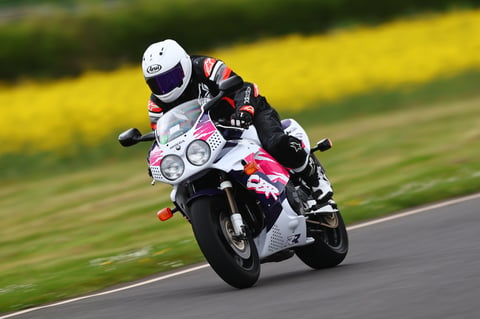Discover the Legacy: Vintage Japanese Motorcycles Unveiled
Explore the rich history and enduring appeal of vintage Japanese motorcycles in this comprehensive guide. From iconic brands like Honda, Yamaha, Kawasaki, and Suzuki, we unveil the classic models that revolutionized the industry. Learn about legendary bikes such as the Honda CB750 and Kawasaki Z1, their unique features, and why they're still coveted by collectors today. Discover restoration tips, value insights, and where to find these two-wheeled treasures. Whether you're a seasoned enthusiast or a curious newcomer, dive into the world of vintage Japanese motorcycles and experience the perfect blend of engineering excellence and timeless style. #VintageMotorcycles #JapaneseClassics #MotorcycleHistory
9/16/20247 min read
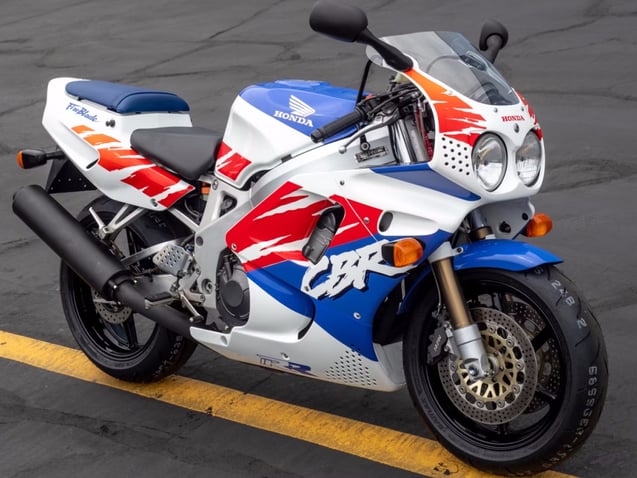

Evolution of Vintage Japanese Motorcycles
The history of vintage Japanese motorcycles is a tale of innovation and growth that shaped the landscape of the motorcycle industry. Understanding the evolution of these iconic machines involves exploring the early Japanese motorcycle industry and witnessing the rise of Japanese motorcycle dominance.
Early Japanese Motorcycle Industry
The roots of the Japanese motorcycle industry can be traced back to the late 19th century. The first Japanese motorcycle, imported by Shinsuke Jomonji in 1896, marked the introduction of these two-wheeled wonders to the Japanese populace. It wasn't until 1908 that Narazo Shimazu constructed the first entirely Japanese motorcycle, laying the groundwork for domestic production.
In 1913, Eisuke Miyata replicated a Triumph motorcycle, giving birth to the 'Asahi' brand and kickstarting the nascent Japanese motorcycle industry, mirroring the styles and technologies coming from Europe (The Vintagent). This marked the beginning of Japan's journey towards becoming a powerhouse in the global motorcycle market.


Rise of Japanese Motorcycle Dominance
The 1920s saw Japanese automobile manufacturers and parts makers, such as the Meguro Gear Manufacturing Company, delve into motorcycle production. Meguro's 175cc single-cylinder offering gained popularity and laid the foundation for the future successes of Japanese motorcycle manufacturing.
From the early 1950s, Japan experienced a surge in motorcycle production, reaching over 2.4 million units by 1966. This exponential growth in manufacturing capacity catapulted Japanese motorcycles to global fame, with brands like Honda leading the charge (Cycle World). By 1967, Japanese manufacturers were projected to produce around 3,000,000 motorcycles, highlighting the rapid expansion and dominance of the Japanese motorcycle industry. Honda alone was churning out nearly 150,000 motorcycles per month during that year, shattering industry expectations.
The remarkable journey from the humble beginnings in the early 20th century to the powerhouse of the global motorcycle industry highlights the indelible mark that vintage Japanese motorcycles have left on the world of motorcycling.
Iconic Vintage Japanese Motorcycles
Exploring the legacy of vintage Japanese motorcycles unveils some iconic models that have left a lasting impact on the motorcycle industry. Two noteworthy examples are the Honda Super Cub and CB750, as well as the Kawasaki Z1 900 and Yamaha RD350LC YPVS.
Honda Super Cub and CB750
The Honda Super Cub made its debut in 1955 and quickly became a global sensation, selling over 100 million units worldwide. This revolutionary model introduced features such as a clutchless manual gearbox and large motorcycle-type wheels, making it safe to ride on various road conditions. The success of the Super Cub played a significant role in establishing Japanese dominance in the motorcycle industry well into the 1970s and beyond.
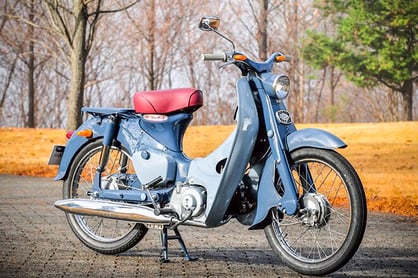

In 1969, Honda launched the CB750, a groundbreaking motorcycle that revolutionized the industry. The CB750 featured an inline-four-cylinder engine with electric start, front disc brake, and a leak-free design. Its introduction marked the end of British motorcycle industry supremacy and ushered in the era of modern sports bikes. Both the Super Cub and CB750 are considered iconic models that have shaped the trajectory of Japanese motorcycles.
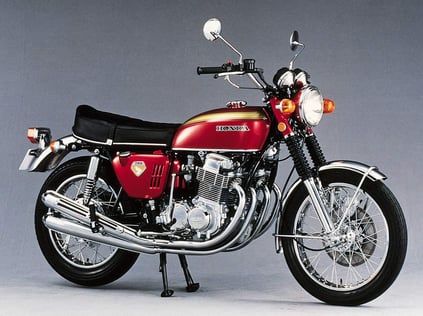

Kawasaki Z1 900 and Yamaha RD350LC YPVS
The Kawasaki Z1 900 hit the market in 1972, showcasing a powerful 900cc engine with double overhead camshafts neatly housed in a tubular steel frame. Similar to the Honda CB750, the Z1 900 signaled a shift towards higher engine capacities and technological advancements in Japanese motorcycles. This model contributed to the evolution of superbikes and set new standards in performance and design.
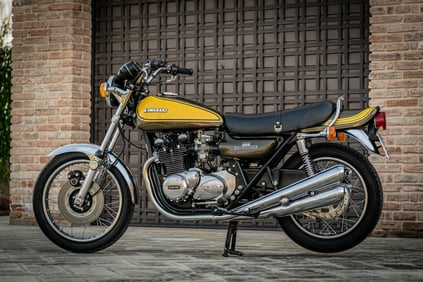

Yamaha introduced the RD350LC YPVS in 1983, offering a unique two-stroke engine at a time when most manufacturers were transitioning to four-stroke engines. The RD350LC YPVS boasted 60 horsepower and a lightweight chassis, delivering exceptional performance and agility. This model stood out in a changing motorcycle landscape, showcasing Yamaha's commitment to innovation and high-performance motorcycles.
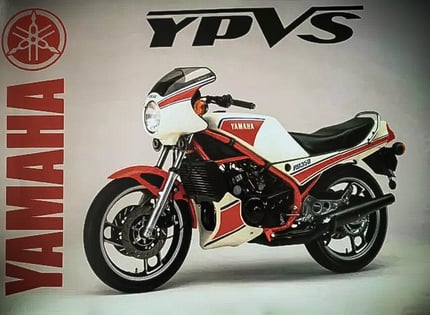

These iconic vintage Japanese motorcycles have not only left a mark in the history of motorcycling but continue to be celebrated for their innovation, performance, and lasting impact on the industry. Discovering the legacy of these models provides a glimpse into the rich heritage and evolution of Japanese motorcycle engineering.
Notable Vintage Japanese Models
Among the myriad of vintage Japanese motorcycles, there are a few iconic models that have left a lasting impact on the motorcycle industry. Let's explore the Honda CBR900RR FireBlade, Kawasaki KR250, and Yamaha XS650.
Notable Vintage Japanese Models
The Honda Cbr 900RR Fireblade, introduced in 1992, marked a significant milestone in the world of sports bikes. This revolutionary motorcycle set new standards for performance and handling in the industry. With a lighter design compared to its competitors and powered by an 893cc engine, the FireBlade redefined the sports bike category. Its agility and power captivated riders worldwide, solidifying its position as a legendary model.


Kawasaki KR250
The Kawasaki KR250, a dominant race bike that emerged in 1975, holds a prominent place in the vintage motorcycle realm. Renowned for its exceptional performance on the track, the KR250 captured an impressive eight world championships between 1978 and 1982. Powered by a 249cc parallel-twin engine, this high-performance machine generated 45 hp and 26.7 lb-ft of torque, showcasing Kawasaki's prowess in the racing arena. Recently, collectors have valued this prized gem at up to $65,000.
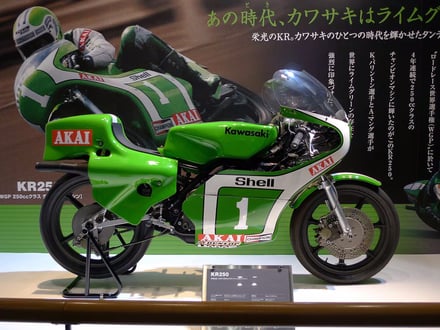

Yamaha XS650
The Yamaha XS 650, introduced in 1972, was a versatile model that excelled both on the street and the racetrack. With a 653cc engine producing 53 hp and 39.8 lb-ft of torque, the XS650 offered a thrilling riding experience. Its modern parallel-twin engine design allowed for quick acceleration and robust power delivery, making it a formidable competitor to classic British brands like Triumph, BSA, and Norton. The XS650's success as a street and race bike solidified its place as a favorite among motorcycle enthusiasts.
These notable vintage Japanese models, including the Honda CBR900RR FireBlade, Kawasaki KR250, and Yamaha XS650, have not only left a mark on the motorcycle industry but have also garnered a dedicated following of enthusiasts who appreciate their design, performance, and historical significance.
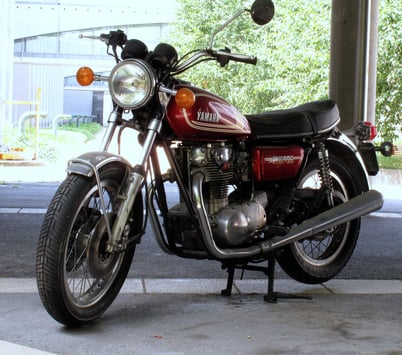

Buying and Restoring Vintage Japanese Motorcycles
For enthusiasts looking to delve into the world of vintage motorcycles, understanding the nuances of vintage Japanese motorcycles is crucial. Whether you are a seasoned collector or a beginner with a passion for classic bikes, knowing how to research and purchase these timeless machines, as well as the essential restoration considerations, can enhance your experience.
Research and Purchase Tips
Before embarking on the journey of acquiring a vintage Japanese motorcycle, there are several key considerations to keep in mind. Essential steps, as outlined by Cool Material, include verifying the VIN number to ensure the bike has a clear title and has not been reported stolen. Additionally, listening to the bike run, checking that all components work, and taking the bike for a test ride are crucial steps to assess its performance and condition.
Researching the specific model and its historical significance can provide valuable insights into its rarity and desirability. Understanding the production year, technical specifications, and any unique features of the motorcycle can guide your decision-making process. Exploring resources such as vintage motorcycle forums, publications, and collector networks can also help you gain a deeper understanding of the market and connect with fellow enthusiasts.
When purchasing a vintage Japanese motorcycle, consider factors such as the bike's maintenance history, previous modifications, and overall condition. Investing in a well-maintained and original example can save you time and money on restoration efforts in the long run. Taking your time to find the right bike that resonates with your preferences and budget is essential in building a fulfilling vintage motorcycle collection.


Essential Restoration Considerations
Restoring a vintage Japanese motorcycle requires meticulous attention to detail and a thorough understanding of the bike's mechanical components. Common areas that often require attention or replacement on vintage motorcycles include the carburetor, tires, lights, horn, electrics, controls, throttle, clutch, brakes, fluids, suspension, and leaks, as highlighted by Cool Material.
When considering restoration, it's important to factor in the availability and cost of replacement parts. The cost of classic motorcycle parts has significantly increased over the last decade, making restoration a costly endeavor. High-quality replica parts are rare, and using cheap or incorrect parts can lead to further damage. Additionally, used parts may be expensive as they often require refurbishment before installation.
For vintage Japanese motorcycles, finding investment-grade classic models can be challenging, as highlighted by The Motorcycle Broker. Collectors often seek out these bikes with the anticipation of future value appreciation, making them desirable additions to any collection.
By incorporating these research and purchase tips, along with essential restoration considerations, enthusiasts can navigate the world of vintage Japanese motorcycles with confidence and ensure the preservation of these iconic machines for future generations.
